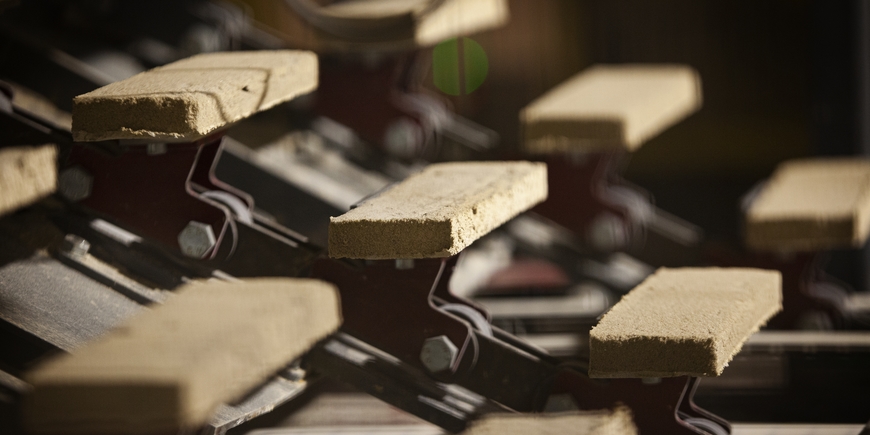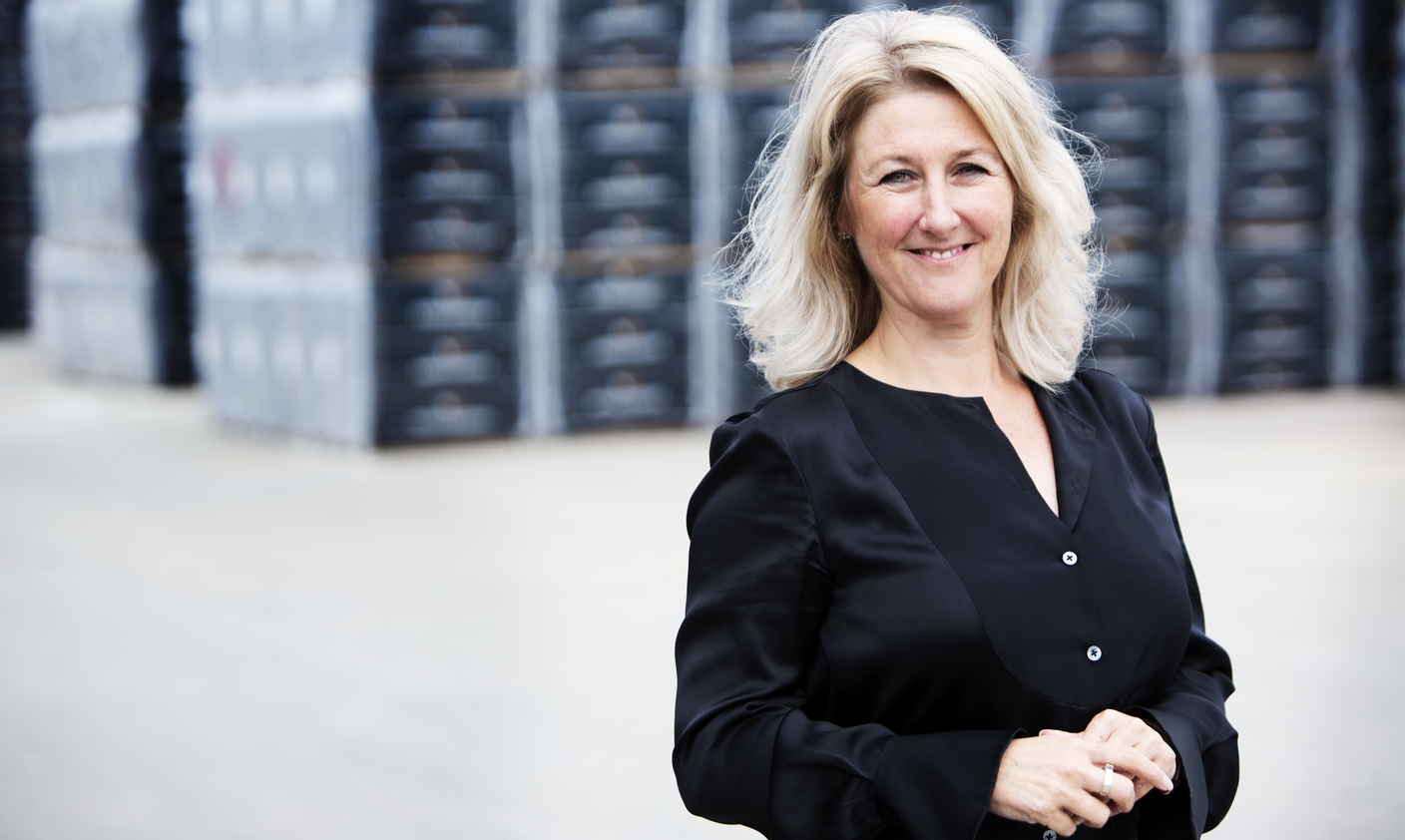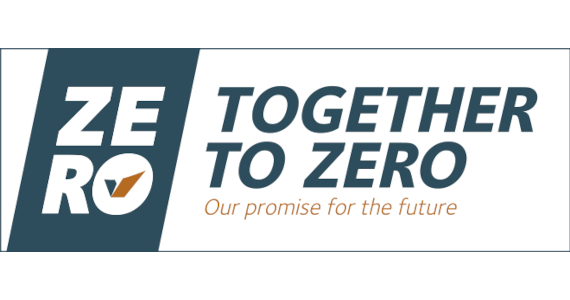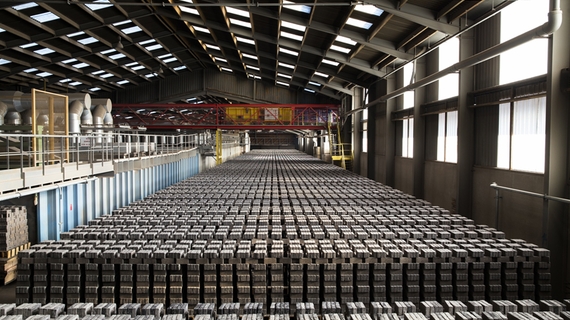The Energy Crisis in the Construction Industry: How the Brick Sector is Helping to Provide Solutions

We are only just recovering from the rising price of building materials, now energy prices are skyrocketing too. The energy crisis is leaving its mark on all sectors, including construction.
The UK government has set out plans to radically improve the energy performance of new homes, with targets for all homes to be highly energy efficient, with low carbon heating and be zero carbon ready by 2025. All UK homes and businesses will have to meet rigorous new energy efficiency standards to lower energy consumption and bills, helping to protect the environment, making energy-efficient design an absolute top priority.
Everyone knows that bricks are fired in a kiln and that this obviously requires a lot of energy. A brick consists of natural, often recyclable raw materials and production is almost waste-free, but does emit CO2. We do everything we can at Vandersanden to optimise energy consumption, for example by using residual heat from firing to dry our bricks. But that doesn't mean we stop there. We want to do our bit for a more sustainable future.
A new slimmer brick is on the horizon
The big question is will bricks be used less because of the energy crisis? Let us be clear: we are not leaving the brick era behind (yet), but we are putting the brick on a diet. We have been working on slimmer bricks for years. Today, facades are often still covered with a layer of 10 cm of facing bricks, but those days will soon be behind us. We are going to 'dematerialise' the brick. We are moving towards a 7 cm brick, which has the same great properties but requires 20 - 25% less raw materials and therefore less energy. Better still, the brick is about 10% cheaper. We are already producing the slim brick and will soon expand production to all our factories.

Dematerialisation leads to the use of less material, helping us to save energy and materials. The light weight also translates into more sustainable transport.
The slimming down doesn’t stop there
We started making 1.8-cm brick slips a few years ago, achieved by simply sawing full bricks into strips. In 2017 Vandersanden was also the first brick manufacturer to switch to the production of ECO brick slips, which are directly formed in moulds of 1.8 cm. They use 70% less raw materials and require 50% less energy consumption compared to traditional facing brick. By using narrower bricks and/or brick slips, you allow for more space for insulation in your walls.
We are making the dematerialisation move across the breadth of our business. For our entire brick range at our production site in Kessel, 6 cm will be the new standard, instead of 6.7 cm. That is a reduction of more than 10%. We continue to look for ways to dematerialise our bricks further. Dematerialisation leads to the use of less material and thus we not only save energy and materials, but the light weight also translates into more sustainable transport.

Together to Zero
The brick sector, and by extension the construction sector, will change profoundly. The slimmer brick is one of many evolutions in this sector.
At Vandersanden, we don’t think in years, but in generations, and we are in the driving seat for making the brick sector more sustainable, with one clear goal: CO2 neutrality by 2050. Here, we are not talking about an ambition, but a promise. Together to Zero - we will deliver.

However, we cannot make the brick sector this profoundly sustainable on our own. Nor do we want to. We recently launched our Together to Zero sustainability campaign, in which we appealed to our stakeholders to take up the challenge together to operate and produce completely carbon-free in the future. Based on our philosophy ‘Together We Build Greatness’, we want to give everyone in our industry the opportunity to join this movement.
We have defined eight areas to guide us towards CO2 neutrality by 2050: dematerialisation, water management, low energy consumption at production sites, smart automation, fossil-free mobility, circular materials & applications, renewable energy and low-carbon / carbon negative products. Within these eight areas, many achievements have already come to fruition. For instance, we use energy-efficient brick kilns, we use the residual heat from firing to dry the bricks, we’re equipped with over 35,000 solar panels and recently we even had our own wind turbines built. And that's not all: our vehicle fleet (including forklift trucks) is fully electrified, we set up a return service for wooden pallets and only use packaging consisting of at least 30% recycled material. And we did by no means do everything alone: we are cooperating with many others in the application of climate-adaptive solutions and for the dematerialisation of bricks we are joining forces with colleagues and sector federations.
And it doesn't stop there. Together to Zero is a movement we want to promise to keep. We are not waiting until tomorrow. Let us join hands, as an industry, as a company and as a society and achieve our Together to Zero campaign goals.
Nathali Donatz, Group Marketing Director Vandersanden


